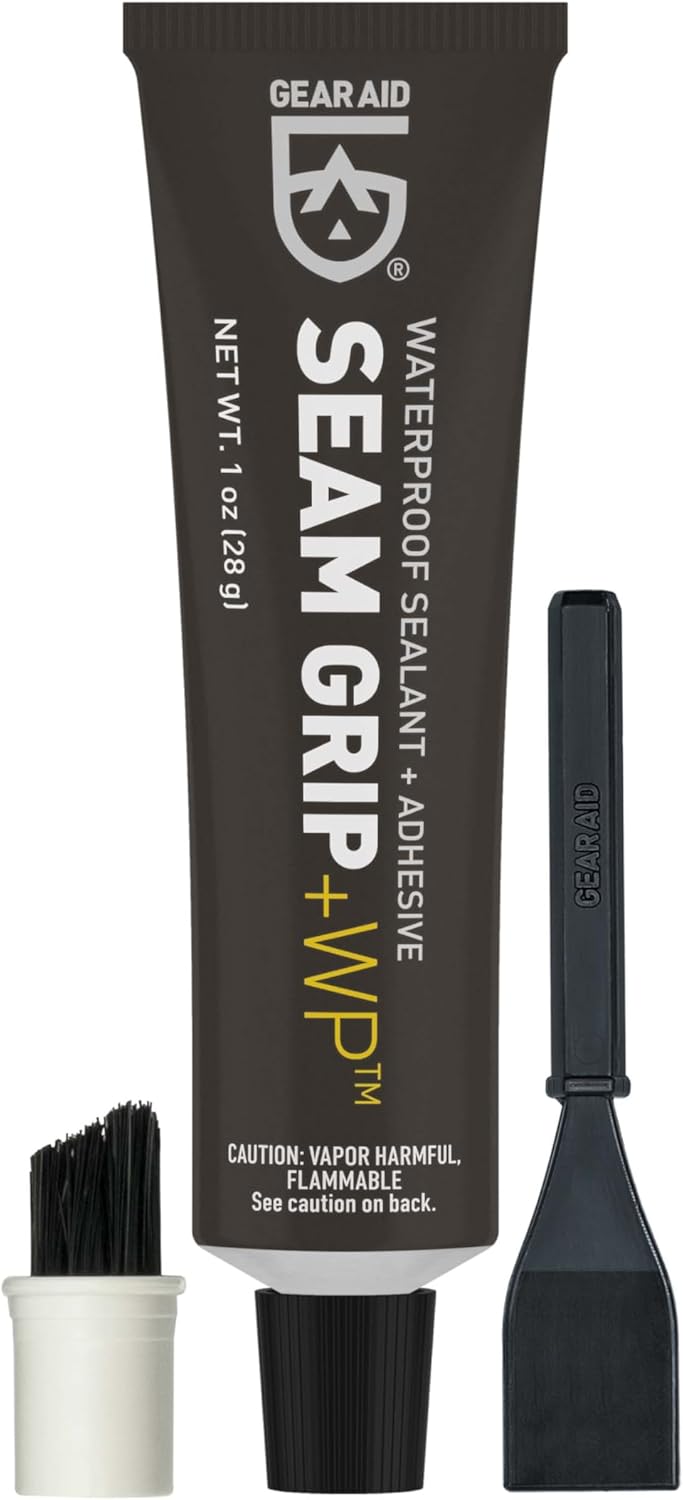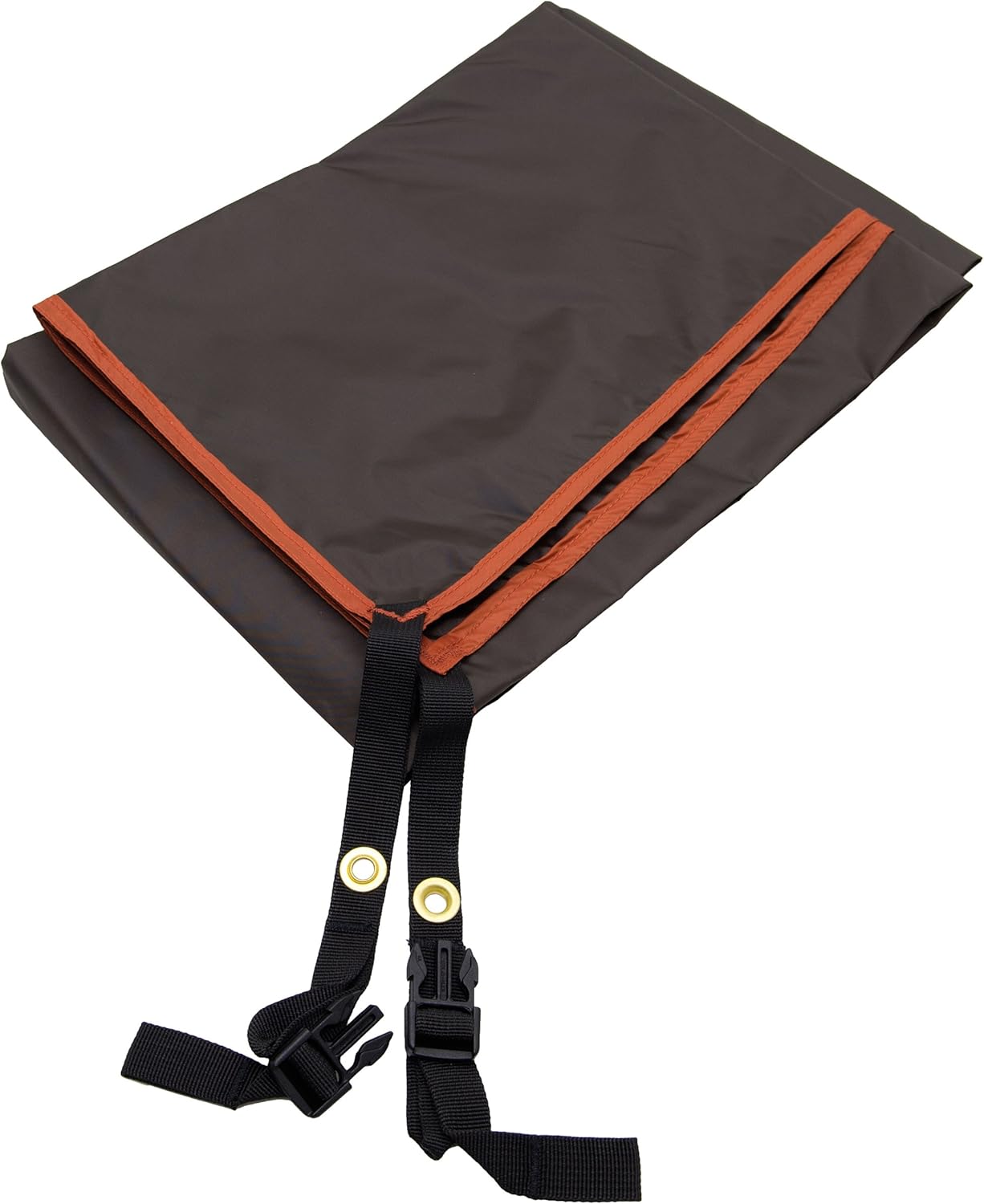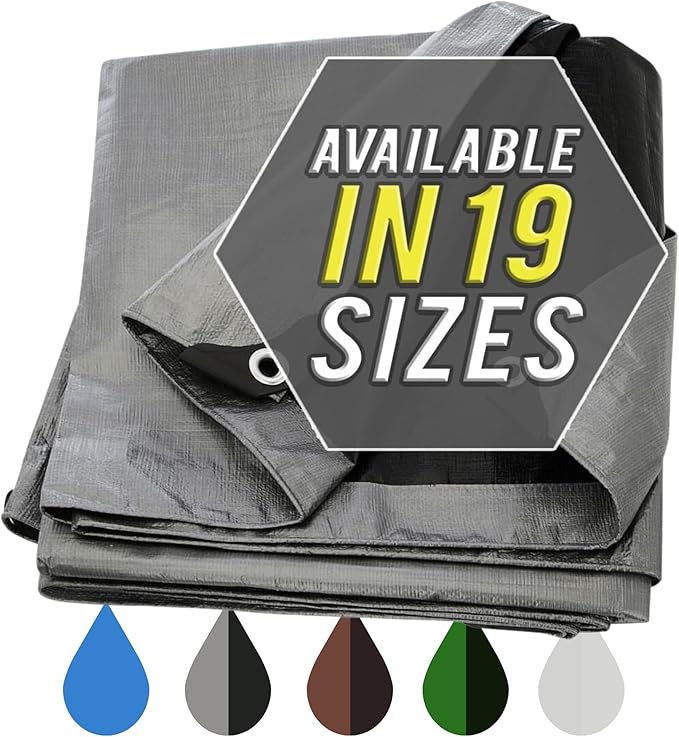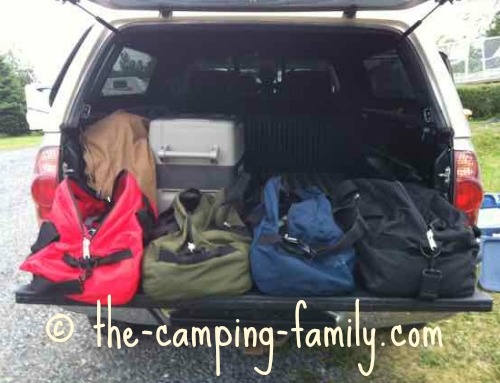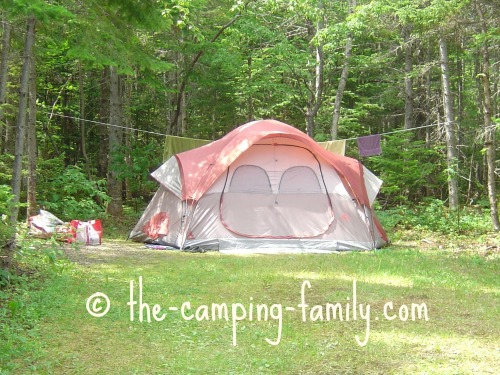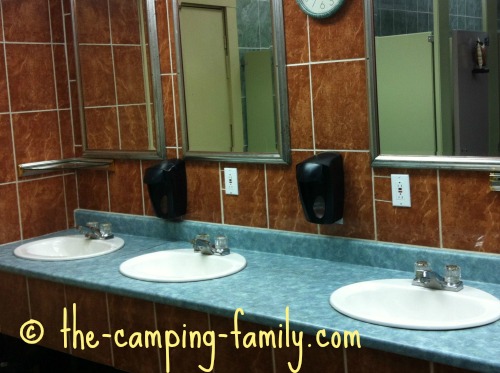Tent Waterproofing
And More Ways To Keep Your Tent Dry
There are a number of tent waterproofing products on the market - but are they necessary? That depends on the tent.
Tent with waterproof walls
Some tents have waterproof walls and mesh roofs. This type of tent comes with a small rainfly that covers just the mesh roof.
Since the walls of the tent are mostly unprotected, it's important that the tent walls are completely waterproof.
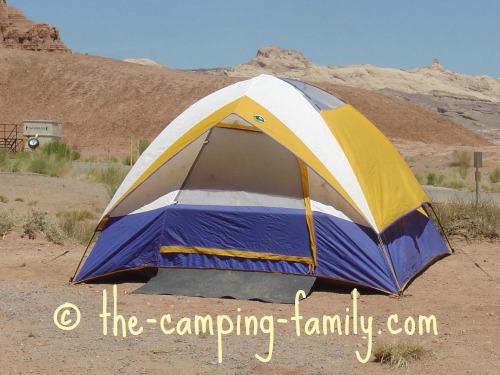
These tents may need regular tent waterproofing with sealant sprays.
Read the manufacturer's directions and apply a recommended waterproof sealant product when needed.
Kiwi Camp Dry can waterproof not only your tent, but your boots and backpacks too!
Portable Shower for Camping
This portable rechargeable camping shower set means you can shower anywhere!
Read more at Amazon here and find the best price!!
But wait! If you don't have a tent yet, read this!
There's another, better way to ensure you stay dry in your tent!
For family camping, you want to be able to stay dry in any weather. A tent with a small fly will not keep you dry in a downpour - even if you waterproof it.
The interior of this tent got wet on this rainy day!
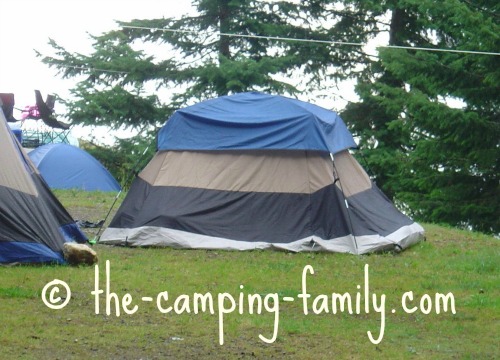
Some campers drape tarps over their tents on rainy days.
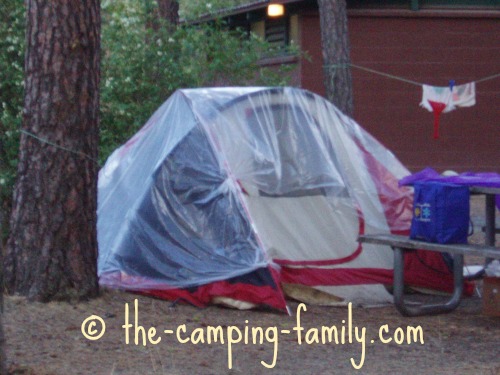
This isn't an ideal solution. In a downpour, your gear and bedding may still get wet, and the interior of the tent will get very stuffy and humid!
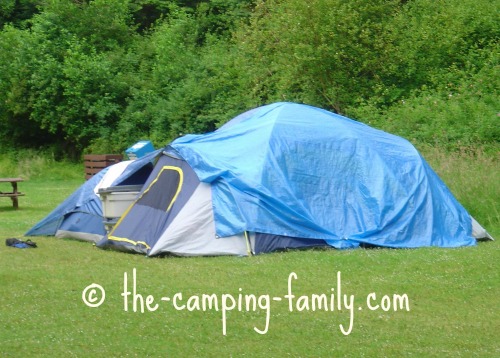
Read on to learn about a tent that will keep you dry no matter what!
Tent Waterproofing
A tent with a full fly
A good quality, waterproof tent has two pieces:
A breathable inner tent with an attached waterproof floor
With this type of tent, the tent walls are not designed to be waterproof. More than that - they are not supposed to be waterproof! Never use tent waterproofing on the inner tent. It is made of nylon, which allows air to flow freely through. This keeps the tent from being unbearably humid and stuffy.
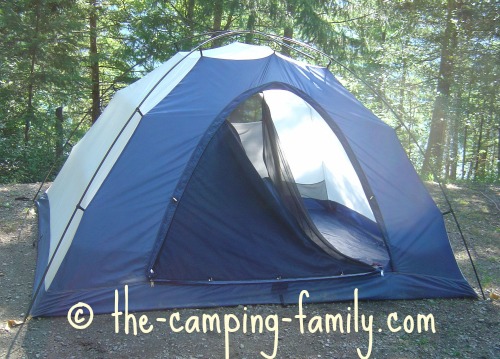
The floor of the tent, on the other hand, must be absolutely waterproof.
A waterproof fly
The tent fly is what keeps you dry in a rainstorm.
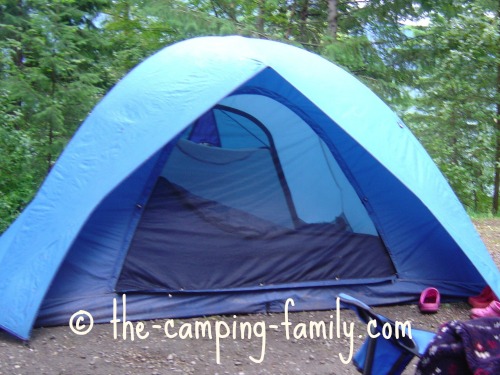
When the tent is set up correctly, and pegged out securely - like this:
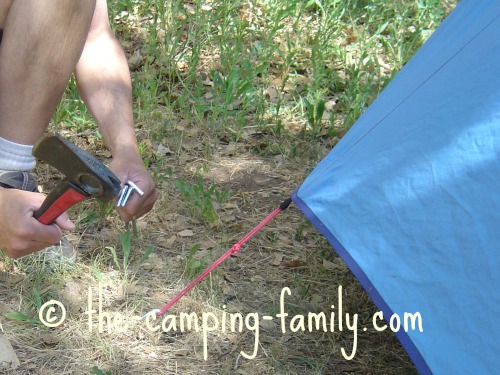
The rain flows down the fly and away from the tent.
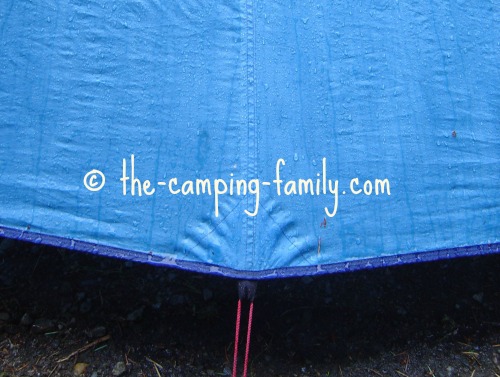
Inside the tent, you stay dry and warm.
It's important that the fly does not touch the tent.
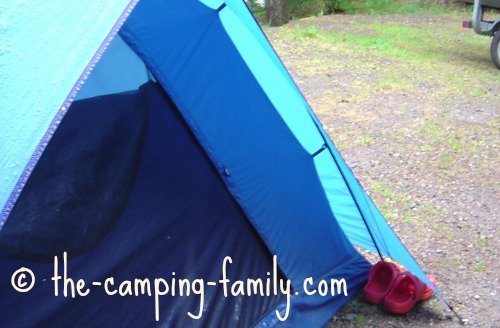
Notice that the fly is several inches away from the tent.
Do I ever need to use tent waterproofing on a tent that has a full fly?
A quality tent will have factory-sealed seams in the floor and on the fly.
These seams have a waterproof covering applied over the stitching. When the seams get old, you may notice that they begin to peel.
That's when it's time to do some tent seam sealing, using a product like this one - Seam Grip.
How to waterproof the seams
- Get a tube of seam sealant and apply it generously to the seams. (It's sort of like using a glue stick.)
- Follow the manufacturer's directions.
- Allow to dry for at least 24 hours before packing up the tent.
- To prevent the sticky sealant from adhering to the tent fabric, sprinkle the treated seams with talcum powder before putting the tent away.
More things to consider
Should I put a tarp under the tent?
You may hear recommendations about putting a tarp under the tent to keep the tent off the wet ground.
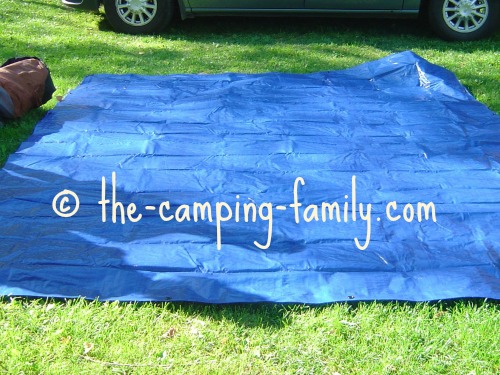
If it rains, you may wish you hadn't.
Rain will fall on top of the tarp, run under the tent, and pool there.
Best-case scenario:
The floor is completely waterproof. There is a cold puddle underneath the floor. You lie on top of the cold spot all night. (Aren't you glad you have a good quality sleeping pad?)
Worst case scenario:
There is a hole in the floor. Maybe it's just a tiny pinhole. The water seeps in and soaks you and your bedding.
If you insist upon using a tarp, be sure to tuck it well under the tent so that no part of it protrudes. That's easier said than done. Even if a tiny smidgen of tarp sticks out, that's enough to catch the rain.
What about a tent footprint?
Some tents come with custom-sized "footprints" that serve the same purpose - but these too can collect water in a downpour.
If you decide to purchase a tent footprint, be sure that you get the one that is designed to fit your particular tent!
This footprint fits an ALPS Mountaineering 2-person Tent - nothing else!
For further details and to purchase this footprint CLICK HERE.
We have a tent footprint, but we have learned through experience that it isn't particularly helpful. We use it only to protect the tent floor when we camp on very rocky or sharp ground.
It's a better idea to set up the tent on a well-drained site, and to trust in the waterproofing of the floor. Here are some tips for choosing good spot for your tent.
But what if the floor isn't waterproof?
If you're not sure that your tent floor is completely waterproof and you want extra protection, put down a tarp inside the tent, not under it.
You can purchase a tarp HERE.
There's moisture inside my tent! Do I need tent waterproofing?
It's common to notice moisture on the inside of the fly. You may wonder if your tent has a leak.
Not at all! This moisture is condensation from your breathing.
A good quality tent is designed to deal with this. The moisture passes through the breathable walls of the tent, and collects on the underside of the fly. If the tent is pegged out correctly so that the walls are taut, the moisture runs down the fly and away.
This is not a problem!
The bottom line
Buy a good quality tent with a full fly, set it up correctly, take care of it and it will keep you dry no matter what the weather. When it gets old, a bit of tent waterproofing on the seams will extend its life for many more years!
Now that you know all about tent waterproofing, visit this page to learn more about tents for camping.
Planning a camping trip? I can help! Visit The Camping Family home page to get started.
Most Popular
Product of the Month
Iwatani Camp Stove
The perfect portable cooktop!
CLICK HERE for more information and best price
Recent Articles
-
Camping Tips For The Best Camping Trip With Your Family
Apr 15, 25 11:21 AM
After years of family camping, we've learned lots of camping tips that make any camping trip easier and happier. Here are our favorites! -
Camping Snacks: Healthy Delicious Treats For Your Next Camping Trip
Apr 15, 25 11:10 AM
Enjoy these healthy camping snacks on your next family camping trip! -
A Portable Camping Toilet Lets You Relax and Enjoy Your Vacation
Apr 15, 25 03:54 AM
Bring along your own camping toilet on your next camping trip and be prepared for anything! Choose the right type of toilet for your family with this simple guide.


